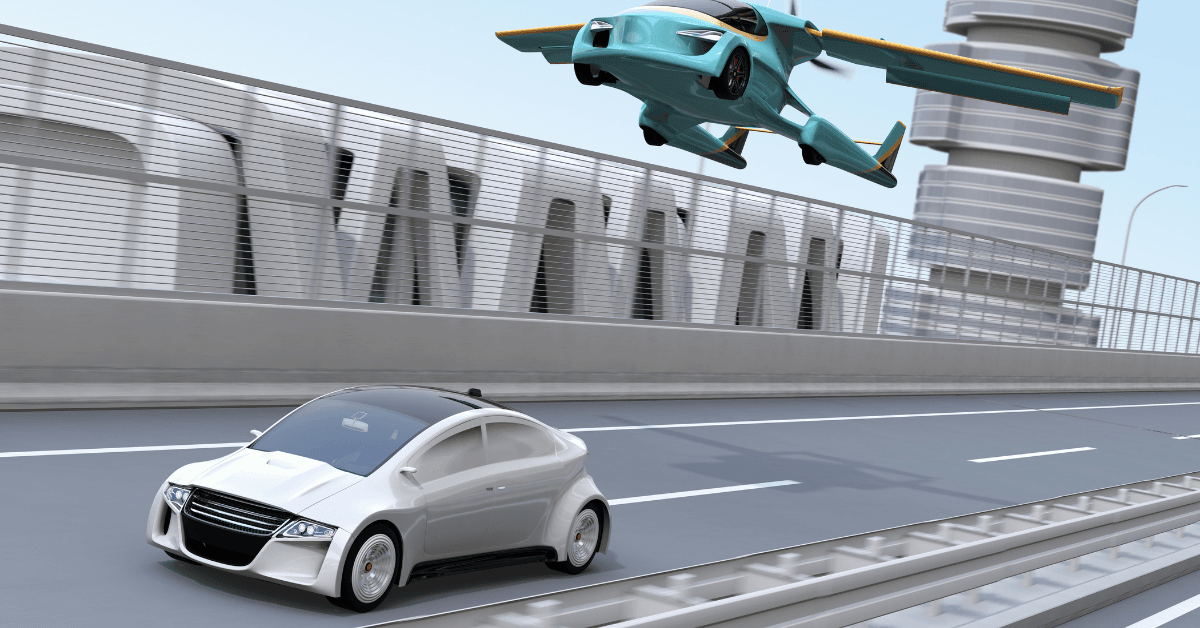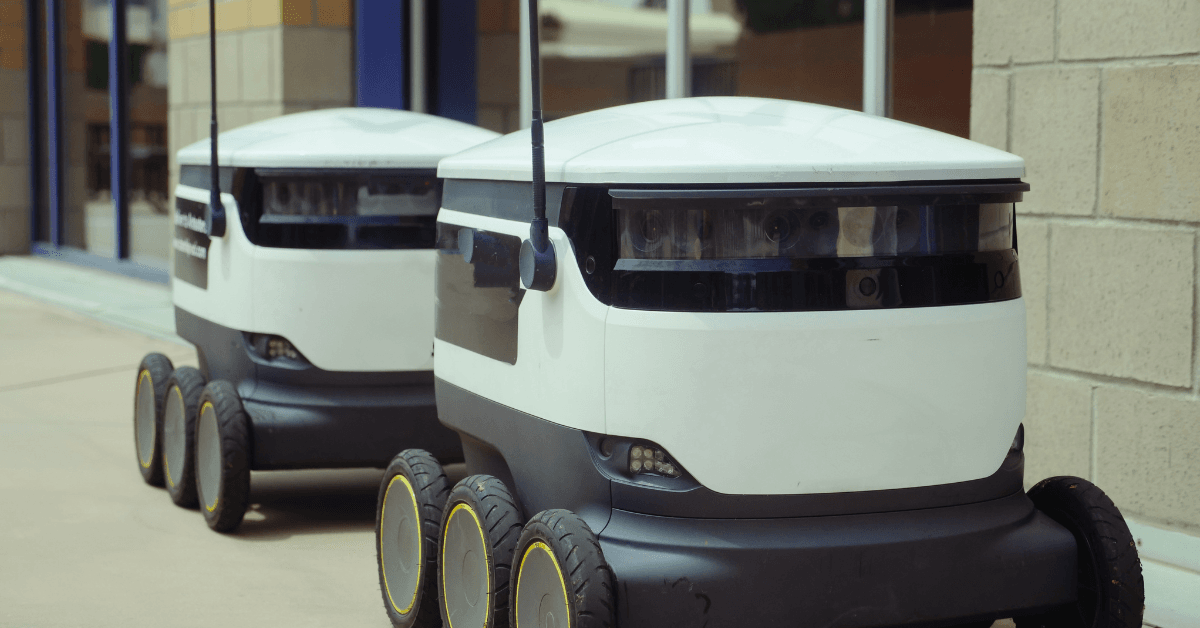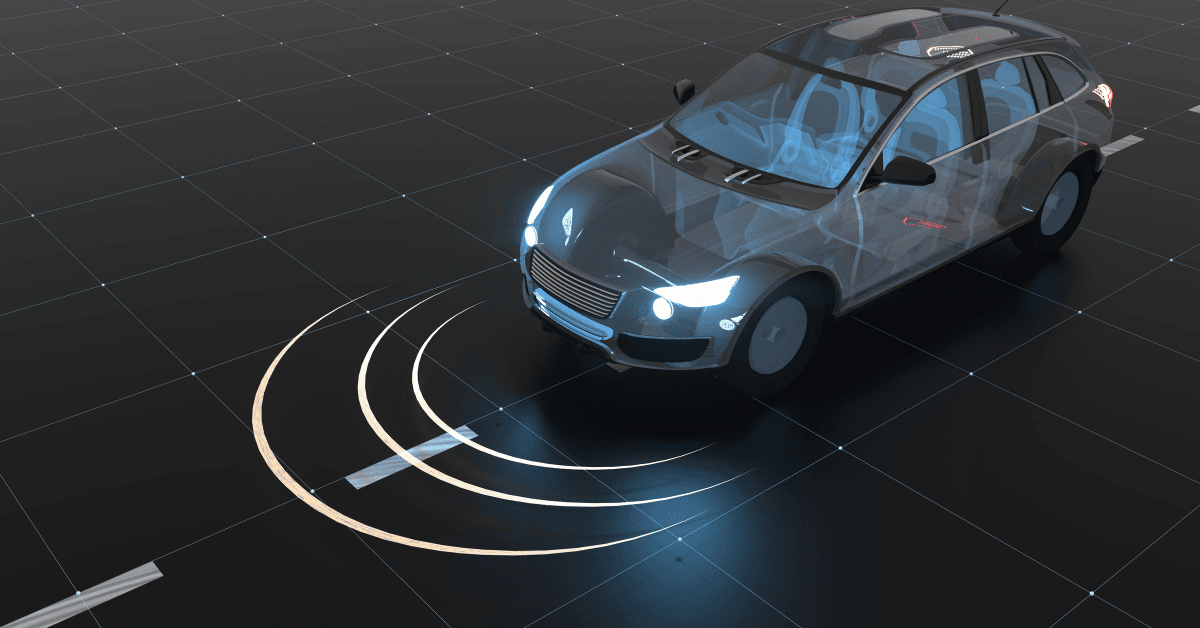Greetings
There is an increasing need for creative transportation solutions as urbanization continues. Growing traffic, pollution, and few resources are all consequences of our cities’ expansion. Futuristic Ideas for Transportation- A world that is evolving quickly requires more than just traditional transportation methods. As a result, future transportation concepts are gaining popularity, offering high-tech, efficient, and ecological options.
Our perspective on travel is changing as a result of technological breakthroughs. For example, by improving safety and easing traffic, autonomous cars have the potential to completely transform road transportation. Electric aircraft, a cleaner and more environmentally friendly alternative to traditional jets, have the potential to usher in a new era of air travel. Another innovative idea is the Hyperloop, which uses near-supersonic pods in vacuum tubes to significantly cut down on travel times between large cities.
We shall examine these and other futuristic transportation ideas in this blog. We will examine how they function, the advantages they provide, and upcoming difficulties. These innovations—which range from drone buses to flying cars—represent the mobility of the future and have the potential to completely change the way we travel, live, and work. Come along as we examine the fascinating potential that the transportation industry has ahead of it.

1. High-speed travel revolutionized by the Hyperloop-Futuristic Ideas for Transportation
The hyperloop is a revolutionary idea in transportation that will transform travel by reaching extraordinarily high speeds with no harm to the environment. Elon Musk initially proposed this ground-based transportation concept in 2013, promising to carry people in pods at speeds of up to 700 miles per hour. Musk’s plan is to use magnetic levitation and vacuum tubes to significantly minimize friction, providing a clean and effective substitute for existing modes of transportation.
The Hyperloop’s Mechanism
The Hyperloop’s fundamental infrastructure consists of low-pressure tubes that carry specially made “pods” or capsules at amazing speeds. Because of their elevated or subterranean placement, these tubes provide an atmosphere that is nearly frictionless and reduce air resistance. The capsules may float above the track without contacting it thanks to magnetic levitation (maglev) technology. Travel becomes smooth and energy-efficient as a result of the removal of friction. The tube’s internal vacuum further reduces air drag, enabling even faster transit speeds.
The advantages of the Hyperloop-Futuristic Ideas for Transportation
With a number of possible benefits, the hyperloop has the potential to revolutionize the transportation industry. The Hyperloop’s main advantage lies in its speed, potentially reducing travel times between cities to a level comparable to flying speed. Second, the Hyperloop may be a more affordable option than trains and airplanes because of its cost-effectiveness. With lower energy use and upkeep expenses, the technology might make travel more economical and environmentally friendly. Finally, people view the Hyperloop as a green alternative due to its potential to significantly reduce carbon emissions compared to other modes of transportation.
Current initiatives and developments
Several businesses are attempting to make the Hyperloop a reality, with Virgin Hyperloop and Elon Musk’s The Boring Company leading the charge. The prototype pods of Virgin Hyperloop have already undergone successful testing, and Musk’s Boring Company is working on tunnel construction to enable high-speed transportation systems. Despite the progress, significant financial investments and technological advancements are still required to make these futuristic transportation methods accessible to the general public.
Difficulties with Implementation-Futuristic Ideas for Transportation
Despite the Hyperloop’s immense potential, removing a few obstacles is necessary before it can serve as a regular mode of transportation. One of the biggest barriers is the regulatory environment. International governments need to thoroughly test and approve Hyperloop systems as a whole new mode of transportation. There are also issues with technological viability; although the technology is there, building the necessary infrastructure—such as the vacuum tubes and maglev systems—presents considerable financial and logistical difficulties. Additionally, we must carefully consider environmental and safety factors, including how to safeguard passengers in an emergency.
2. The future of road transportation with autonomous vehicles-Futuristic Ideas for Transportation
Self-driving cars, trucks, and buses, or autonomous vehicles (AVs), are a significant advancement in transportation technology. These cars, equipped with advanced technology, can drive and maneuver without human assistance. Machine learning, artificial intelligence (AI), and sensors are the main technologies underlying AVs. The car uses sensors, including LiDAR, radar, and cameras, to sense its surroundings. In the meanwhile, the car can respond to barriers, traffic, and road conditions thanks to AI and machine learning algorithms that evaluate this data and make judgments in real time.
Enhancements in efficiency and safety-Futuristic Ideas for Transportation
Safety is one of the main benefits of autonomous cars. Their algorithm-driven nature significantly reduces the likelihood of human error, the primary cause of most accidents. AVs adhere to traffic regulations, maintain optimal speeds, and react faster than human drivers. Consequently, they can drastically lower the number of accidents and fatalities. Additionally, AVs increase efficiency by streamlining routes and speeds. Both the environment and the passengers may gain from reduced fuel use and shorter journey times as a result.
Fewer traffic jams
There is also a chance that autonomous cars will ease traffic. Autonomous vehicles that can communicate with one another are able to coordinate their movements, minimizing collisions and alleviating traffic congestion. Additionally, their accurate driving skills help them make the most use of available road space. Especially in crowded cities, this cooperation can result in more efficient traffic patterns.
The AV Market’s Principal Players-Futuristic Ideas for Transportation
Several significant corporations are spearheading the development of autonomous cars. Waymo, a division of Alphabet, the parent company of Google, is a prominent player in the industry. Waymo’s autonomous cars have driven millions of kilometers, enhancing their AI and sensor systems. Additionally, Tesla, under the leadership of Elon Musk, has made significant advancements with its Full Self-Driving (FSD) and Autopilot features. To allow sophisticated driver-assistance functions, Tesla’s cars combine cameras and neural networks. Both businesses are essential contributors to the technological advancement.
Ethical and legal issues
Despite the potential of driverless cars, we need to resolve a number of issues. Liability under the law is among the most urgent problems. It’s unclear who would be liable in the case of an accident—the owner, the software developer, or the car’s manufacturer. Additionally, AVs have to make snap judgments in risky scenarios, such as whether to put the safety of pedestrians or drivers first, which raises ethical questions. Another issue is employment displacement, since driverless cars may result in the loss of jobs in industries that depend on driving, such delivery and haulage.
3. The future of air travel with electric planes-Futuristic Ideas for Transportation
Concerns about climate change are making sustainable air travel more and more crucial. The aviation sector is largely to blame for the world’s carbon emissions. The development of electric aircraft has increased as a result, and they have the potential to completely transform air travel by providing a greener and cleaner option.
Electric Aircraft’s Ascent
The Israeli business Eviation Aircraft has developed one of the most inventive electric aircraft to date, called Alice. Eviation Aircraft designed Alice as a zero-emission, all-electric aircraft for short regional flights. Comparing it to conventional jet engines, it claims to provide a quieter and more energy-efficient flying experience. In terms of attaining sustainable air travel, this aircraft represents a major advancement. With a range of about 440 nautical miles and the capacity to accommodate up to nine passengers, it is perfect for short-distance travel.
Benefits for the environment-Futuristic Ideas for Transportation
The environmental benefits of electric aircraft, such as Alice, are substantial. Electric motors power them, ensuring they produce no carbon emissions while in flight. Conventional aircraft, which use fossil fuels and cause pollution, stand in sharp contrast to this. Adopting electric aircraft might help the aviation sector fight climate change by drastically lowering its carbon impact. Additionally, because electric planes are quieter than conventional aircraft, airports and the surrounding regions are less polluted by noise.
Difficulties to Surmount
Nonetheless, there are a number of obstacles to the broad use of electric aircraft. The battery’s capacity is one of the main issues. Present battery technology constrains the size and range of electric planes, as their motors run on enormous batteries. Alice’s range is 440 nautical miles, but longer trips need even more sophisticated battery capabilities. In addition, the infrastructure required to accommodate electric aircraft—such as airport charging stations—is still in its infancy. The aviation industry as a whole will need to work together and spend heavily in the development of this infrastructure.

4. Flying Automobiles: An Emerging Dream-Futuristic Ideas for Transportation
VTOL (Vertical Take-Off and Landing) vehicles, sometimes known as flying cars, are an exciting advancement in transportation. Like helicopters, these vehicles can take off and land vertically, but they can also fly like regular airplanes. They may dodge traffic and go throughout cities thanks to this special skill, which adds a new level of mobility.
Innovations in VTOL vehicle technology
Industry leaders such as Joby Aviation, Terrafugia, and Vertical Aerospace are driving VTOL aircraft technology. Terrafugia’s Transition, a roadable aircraft capable of transforming from a car to an airplane, is one such vehicle. The VA-X4, on the other hand, is an all-electric aircraft that can transport people with no emissions. For short city travels, Joby Aviation is also creating the Joby S4, a totally electric air taxi. These developments have the potential to completely transform both private and public air travel.
Using urban air mobility to reduce traffic.
The ability to lessen traffic in cities is the main benefit of flying automobiles. VTOL vehicles might offer a solution to the growing urban congestion by using airspace for transportation. This would let individuals travel swiftly between locations by doing away with the necessity for ground-based traffic. Additionally, VTOL planes may provide a more environmentally friendly mode of transportation by lowering the carbon footprint of conventional automobiles.
Safety and Regulatory Difficulties
Notwithstanding their potential, there are a number of obstacles to the practical application of flying automobiles. Among the most significant obstacles is regulation. In urban airspace, governments must design air traffic control systems that can handle a high volume of VTOL vehicles. Furthermore, the creation of safety procedures is necessary to ensure the reliability and safety of these cars for daily use. Another issue is public perception, as many people don’t think flying automobiles are safe.
5. Future-Oriented Intelligent Roads and Infrastructure-Futuristic Ideas for Transportation
A key component of futuristic transportation systems is smart infrastructure. Through the integration of cutting-edge technology, these systems enhance sustainability, efficiency, and safety. The Internet of Things (IoT), smart roads, and linked cars are at the core of this transformation, creating a seamless mobility environment for the future.
The Enhancement of Transportation via Smart Roads
The purpose of smart roadways is to facilitate communication between cars and their drivers. These highways integrate sensors and other gadgets to connect with other cars. For example, sensors can identify weather, traffic, and road damage, assisting drivers in making well-informed choices. In addition to improving safety, this link eases traffic congestion by optimizing traffic flow.
IoT and Connected Vehicles’ Function
In order to link infrastructure and automobiles, the Internet of Things (IoT) is essential. IoT enables a real-time connection between automobiles and road infrastructure, ensuring efficient traffic flow. Automobiles can optimize routes, warn of possible dangers, and modify speeds by exchanging data with one another. In order to guarantee more energy-efficient mobility, which lowers fuel consumption and carbon emissions, linked cars may also communicate with adjacent infrastructure.
Innovations like automated traffic systems and solar roads are being implemented-Futuristic Ideas for Transportation
We are rethinking infrastructure thanks to innovations like autonomous traffic control systems and solar roadways. With the use of photovoltaic panels, solar highways may provide clean energy that can power electric cars and surrounding lighting. However, real-time monitoring and adjustment of traffic lights by automated traffic management systems can minimize delays and improve traffic efficiency.
Working together in the public and private sectors
Government and business sector cooperation is necessary to build smart infrastructure. Governments must establish structures and regulations to encourage innovation, and private businesses provide the funding and technology required for growth. This collaboration is necessary to develop and expand smart road solutions that are advantageous to all parties, guaranteeing future transportation systems that are safe, effective, and sustainable.

6. Green Transportation: Sustainable Options for a Sustainable Future-Futuristic Ideas for Transportation
Reducing carbon emissions worldwide and halting climate change requires sustainable transportation. Eco-friendly transportation options are becoming increasingly important as cities expand and traffic volumes rise. The goal of sustainable transportation is to adopt greener, cleaner alternatives to lessen the impact on the environment.
The Function of Electric Cars (EVs)
Electric cars, or EVs, are leading the green transportation revolution. Since these cars have no tailpipe emissions, they are an important way to lessen air pollution. In addition to providing a greener option to conventional gasoline-powered vehicles, EVs aid in reducing dependency on fossil resources. As more reasonably priced EV models become available, more people are opting for electric vehicles for their everyday journeys.
Vehicles powered by hydrogen and alternative fuels-Futuristic Ideas for Transportation
Vehicles that run on hydrogen also show promise as an environmentally beneficial choice. These cars produce power using hydrogen fuel cells, with the sole waste being water vapor. The potential for hydrogen vehicles to transform heavy-duty transportation and long-distance travel is still in its early stages of development. Apart from electric and hydrogen-powered cars, alternative fuels like compressed natural gas and biofuels provide further practical ways to cut emissions in the transportation industry.
Governmental Policies and Incentives-Futuristic Ideas for Transportation
Governments play a crucial role in promoting environmentally friendly transportation by enacting legislation and offering incentives. Subsidies, tax credits, and refunds for the purchase of electric vehicles encourage people to choose more environmentally friendly solutions. The long-term viability of green mobility options also depends on policies that encourage the growth of renewable energy sources and charging infrastructure.
The prospects for public transportation-Futuristic Ideas for Transportation
Another area is the green transformation of public transportation. In cities all across the world, electric trains and buses are becoming more prevalent. While offering economical, effective transportation, these zero-emission cars also contribute to lowering urban carbon footprints. The development of smart infrastructure and the shift to electric public transportation will likely influence the direction of sustainable cities in the future.
Transportation that is sustainable is essential to a cleaner, greener future. By adopting hydrogen-powered automobiles, electric vehicles, and public transportation, we can lower carbon emissions and build a more sustainable society.
In conclusion,
The creation of an efficient and sustainable world depends on the advancement of futuristic transportation technology. The need for clean and creative transportation solutions grows as we confront environmental issues. Electric vehicles, driverless cars, and hyperloop networks are just a few of the technologies that have the potential to completely change how we travel.
Together, these inventions have enormous promise. Cars that run on hydrogen and electricity can significantly cut carbon emissions. At the same time, flying taxis and driverless cars will increase safety and lessen traffic. Public transportation innovations like high-speed trains and electric buses will also help cities become more sustainable. Together, these technologies provide a comprehensive strategy for transforming international transportation systems.
It will be crucial going forward for people, organizations, and governments to be aware of these developments. By being aware of their potential, we can promote policies that encourage sustainable mobility and make wiser decisions. Engaging with these trends may help create a cleaner, more efficient society, and we hold the power to shape the transportation of the future.
We invite you to subscribe for updates and to comment on these fascinating developments. To contribute to the transformation, keep up with the continuous changes in transportation.
FAQ:
What are the main technologies for transportation in the future?
- The way we think about travel is changing as a result of futuristic transportation technology. Drone taxis, electric autos, flying cars, hyperloops, and autonomous vehicles are some of the major advancements. These innovations have the potential to improve transportation’s speed, safety, and environmental impact.
What impact will driverless cars have on the transportation industry?
- Autonomous vehicles are self-driving automobiles that maneuver without the need for human assistance by using sensors, artificial intelligence, and mapping technology. People anticipate that these cars will reduce traffic jams, reduce accidents, and boost fuel economy. As technology advances, it may also provide older and disabled people with increased mobility.
How does the hyperloop operate, and what is it?
- The hyperloop is a high-speed transit system that can carry people at over 700 miles per hour using a low-pressure tube and magnet-based propulsion. We anticipate this technology to transform long-distance transport, making it more economical, quicker, and environmentally friendly than existing techniques.
What role do electric vehicles play in fostering a sustainable future?
- By utilizing electricity rather than fuel, electric vehicles (EVs) lower carbon emissions. When powered by renewable energy, EVs can drastically reduce air pollution and reliance on fossil fuels. As faster charging infrastructure develops, EVs are beginning to appear as a viable alternative to conventional vehicles.
Is the development of flying automobiles imminent?
- Companies all around the world are presently working on developing flying automobiles. These vehicles will be able to fly across metropolitan areas thanks to vertical takeoff and landing (VTOL) technology. Even though they have obstacles to overcome, such as infrastructure construction and governmental permission, flying vehicles might play a significant role in the transportation networks of the future.



